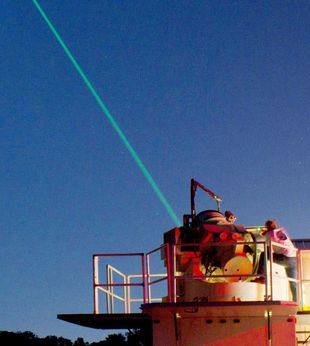Enhancement of the Global Geodetic Observing System: Where to put the next SLR station?

Satellite Laser Ranging (SLR) is one of the four fundamental geodetic space techniques for the accurate determination of geodetic key parameters related to Terrestrial Reference Frames (TRFs), the Earth’s rotation and its gravity field. Those parameters provide the basis for precise geodetic reference frames and thus for geo-referencing and quantifying geodynamic processes and the effects of global change. SLR is a technique based on the measurement of the two-way travel time of laser pulses between stations on the Earth’s surface and satellites in various orbits. These measurements contribute, inter alia, to the determination of satellite orbits, the study of tectonic processes, and the realization of the Coordinated Universal Time (UTC) that is linked to variations of the Earth’s rotation.
However, the inhomogeneity of the current global SLR station network is one of the major obstacles to the determination of the geodetic parameters of interest under the ambitious accuracy requirements on the millimeter level of IAG’s Global Geodetic Observing System (GGOS). But the installation of an additional SLR station is not only a geographical but also a financial decision and thus requires detailed pre-investigation of its potential benefit.
A recent study at DGFI-TUM aimed to determine the locations where new SLR stations would be most valuable. In a simulation, the existing SLR network was amended by one additional SLR station, and the required geodetic parameters were estimated. This simulation was performed repeatedly, whereby the additional station was placed at 42 different locations distributed homogeneously over the globe. The results showed that priority should be given to an additional station in the Antarctic. It would significantly improve the observation geometry and thus the quality of orbits, TRF and Earth rotation parameters. The latter would also benefit from an additional station in the vicinity of the equator, and the datum realization of TRFs would improve with an additional station in the Atlantic and Pacific Ocean regions. Details and results are provided in the open access article Future TRFs and GGOS - where to put the next SLR station? (Advances in Geosciences, 2019, doi: 10.5194/adgeo-50-17-2019, [PDF]).
Arcisstraße 21
80333 München